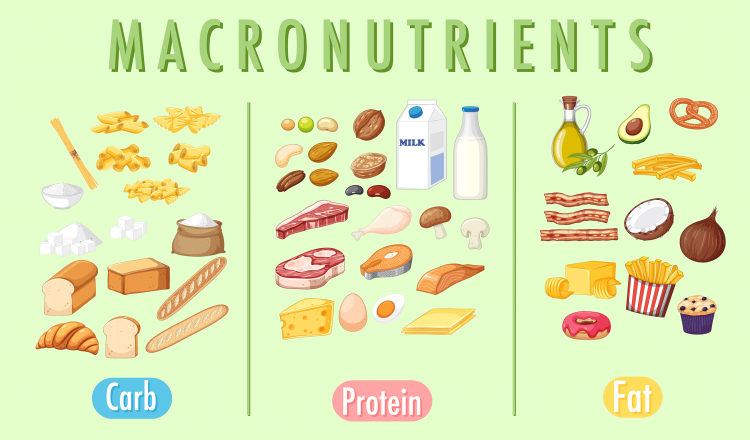Tag: Protein Intake

Calories Per Gram Calculator
Are you looking to convert the amount of macronutrients from grams to calories? Look no further! Our Grams to Calories Calculator is a simple and convenient tool that allows you to convert the grams of macronutrients into their corresponding calorie values. Whether you want to track your daily intake, maintain a healthy diet, or achieve your weight goals, this calculator will be your go-to resource.
Calories Per Gram Calculator
Calculate
Clear
Calories Breakdown
Macronutrient
Grams
Calories
Carbohydrates
0
0
Proteins
0
0
Fats
0
0
Total Calories
0
0
Protein and carbohydrates provide 4 calories per gram, while fats offer a substantial 9 calories per gram. This user-friendly macronutrient calculator is here to assist you in computing the total calories derived from proteins, fats, and carbs in any given meal, ensuring an accurate overall calorie count.
Understanding the Conversion: Grams to Calories
Food labels often provide information about the total calories and grams of macronutrients present, but they rarely mention the specific calorie breakdown for each macronutrient. That’s where our calculator comes in handy. By using it, you can easily understand the relationship between grams and calories and learn the conversion rules.
Let’s take a closer look at the calorie content of each macronutrient:
How Many Calories in a Gram of Carbohydrates?
In general, carbohydrates provide approximately 4 kilocalories (kcal) per gram. Simple sugars offer around 3.87 kcal per gram, while complex carbohydrates range from 3.57 to 4.12 kcal per gram. For simplicity, the conversion is often rounded to 4 kcal per gram.
Try Carbohydrate Intake Calculator!
How Many Calories in a Gram of Protein?
Protein also provides around 4 kcal per gram. It plays a vital role in cell structure and function, and you must obtain it from your diet since the human body cannot synthesize all necessary amino acids.
Try Protein Intake Calculator!
How Many Calories in a Gram of Fat?
Among the macronutrients, fat has the highest calorie content. Each gram of fat provides 9 kcal. Fats are essential for various bodily functions, including maintaining cell membranes, regulating body temperature, and aiding in the absorption of fat-soluble vitamins.
Try Fat Intake Calculator!
How Many Calories in Alcohol?
Alcohol contains 7 kcal per gram. To calculate the calories from alcohol, multiply the amount of alcohol in grams by 7. For example, if you have 50 mL of vodka with an alcohol content of 40%, the calculation would be 7 kcal/g × 50 mL × 0.40 × 0.78924 g/mL = 110 kcal.
Gram to Calorie Conversion Table
Convert the macro’s nutritional values by the this calculator precisely.
Gram
Calories
1g
7.7162 kcal
2g
15.43 kcal
3g
7.7162 kcal
4g
23.15 kcal
5g
30.86 kcal
6g
38.58 kcal
7g
46.3 kcal
8g
54.01 kcal
9g
61.73 kcal
10g
69.45 kcal
15g
108.03 kcal
20g
146.61 kcal
25g
185.19 kcal
30g
223.77 kcal
35g
262.35 kcal
40g
300.93 kcal
Understanding Calories: Calorie vs. Kilocalorie
When discussing calories, it’s important to note that there are two main definitions:
Small calorie or gram calorie (cal): This is the amount of energy required to raise the temperature of 1 gram of water by 1 degree Celsius.
Large calorie, food calorie, or kilocalorie (Cal, calorie, or kcal): This is the unit commonly used in nutrition to express the energy value of food and drinks. It’s equivalent to 1,000 small calories.
In the context of nutrition, the terms “calories” and “kilocalories” are often used interchangeably. So, when using our grams to calories calculator, you may come across both terms referring to the same conversion.
Practical Example: Converting Grams to Calories
Let’s walk through a practical example to understand how to convert grams to calories using our calculator. Suppose we have the following nutritional information for a food product:
Carbohydrates: 25 grams
Protein: 10 grams
Fat: 10 grams
To calculate the total calories in this food product, we apply the appropriate conversion rate for each macronutrient:
Carbohydrates: 4 kcal/g × 25 g = 100 kcal
Protein: 4 kcal/g × 10 g = 40 kcal
Fat: 9 kcal/g × 10 g = 90 kcal
Total: 100 kcal + 40 kcal + 90 kcal = 230 kcal
Therefore, this particular food product contains 230 calories.
Benefits and Applications
Now that you understand how to use the Grams to Calories Calculator,
let’s explore some practical applications:
Following a Healthy Diet: The calculator helps you maintain a balanced and nutritious diet by tracking the calorie content of macronutrients. By knowing the calorie breakdown of your meals, you can make informed choices and meet your energy requirements effectively.
Monitoring Energy Intake: Whether you’re trying to lose, maintain, or gain weight, understanding the calories you consume is crucial. Our calculator enables you to monitor your energy intake accurately and helps you make adjustments to achieve your weight goals.
Supporting a Healthy Lifestyle: By being aware of the calorie content in your food, you can make conscious decisions about your eating habits. Additionally, the calculator provides insights into the calorie content of alcohol, which can be beneficial for those interested in mindful drinking.
FAQs about Grams to Calories Conversion
How many calories are in a pint of beer?
The calorie content of a pint of beer typically ranges from 160 to 180 kcal, depending on the beer type. This estimate takes into account the calories derived from the alcohol content (7 kcal/g) as well as the calories contributed by carbohydrates (4 kcal/g). For example, a pint of 5% beer contains approximately 130 kcal from alcohol and 40 kcal from carbohydrates.
How many grams are in 200 calories?
For carbohydrates and proteins, approximately 50 grams are equivalent to 200 calories. However, for fats, 200 calories would be approximately 22.2 grams.
Why does fat have 9 calories?
Fat contains a higher number of carbon and hydrogen atoms. The bonds within these atoms store more energy, resulting in a higher calorie content. As a result, fats provide 9 calories per gram.
What is the calorie content of 1 pound of fat?
One pound of body fat is estimated to contain approximately 3,500 calories. Therefore, to lose 1 pound of body fat, you need to create a calorie deficit of 3,500 calories. It’s recommended to aim for a healthy calorie deficit of around 500 calories per day to achieve gradual and sustainable weight loss.
Which macronutrient has the most calories per gram?
Fats have the highest calorie content per gram, providing approximately 9 calories per gram. In comparison, both carbohydrates and proteins offer around 4 calories per gram. However, it’s important to consume fats in moderation and choose healthier sources of fat, such as unsaturated fats found in nuts, seeds, avocados, and fatty fish.
Related Calculators:
Wrapping Up
In summary, our Grams to Calories Calculator is a valuable tool that simplifies the conversion of macronutrients from grams to calories. By utilizing this calculator, you can easily understand the calorie content of carbohydrates, proteins, fats, and even alcohol. Start tracking your macronutrient intake, achieve a healthy weight, and make informed dietary choices today!

‘Bodybuilding’s Kendall Jenner’ Vladislava Galagan Reveals Her Daily Protein & Carbs Intake
Vladislava Galagan has been making headlines in the fitness space for her resemblance to American media personality and socialite Kendall Jenner. The difference is she’s much more muscular than the Keeping Up with the Kardashians star. In a recent interview uploaded on YouTube, Galagan revealed her daily macro intake to maintain her jacked physique.
Social media platforms provide a convenient way to amass fame and fortune online given one manages to build a following. There have been various different kinds of audiences that influencers have found. Liver King is one of the most popular names who went viral for eating raw cuts of meat and insane workout routines. Joey Swoll is another recognizable figure in the fitness community who found success on such platforms. He promotes making gyms a safe space for everyone and has a positive crowd that pushes back on the rise in toxic gym culture.
Vladislava Galagan went viral for her unreal muscle mass, size, and similarity to Kendall Jenner earlier this month. The Russian model found a passion for fitness and working out in her teen years about a decade ago. She boasts a pretty feminine face with an incredibly jacked physique that often leaves people stunned at first view. She even faced accusations of faking her build using CGI technology or Photoshop.
Galagan admitted to taking steroids to achieve her physique but insisted the importance of proper nutrition and training could not be neglected.
The 27-year-old has a large audience of a million on Instagram and maintains an active OnlyFans account, which has proven to be a lucrative opportunity for her. She disclosed she earns an eye-watering $10,000 each month by uploading racy content showing off her gigantic arms and washboard six-pack abs. She tends to stay away from the more x-rated requests and reported having success with arm wrestling clips.
‘Bodybuilding’s Kendall Jenner’ Vladislava Galagan reveals her daily macro intake
In a recent YouTube video, Vladislava Galagan revealed her daily macro intake.
Galagan’s daily macro breakdown: 120g protein, 180g carbs, and 80g fats.
Vladislava Galagan / Instagram
Vladislava Galagan continued to improve her personal fitness after making her bodybuilding debut in 2018. She consumes four meals a day with her protein sources coming from meats like beef, chicken, and fish. She follows a strict training plan hitting the gym six days a week for about 90 minutes each, targeting every muscle group twice with three sessions reserved for cardio.
Galagan has shown no signs of slowing down anytime soon. Considering she’s only in her twenties, it will be interesting to see how her physique changes over the next years.
You can watch the full video below.
Related: Calculate your optimal daily protein intake with the best protein calculator
Published: 20 May, 2023 | 12:08 PM EDT
